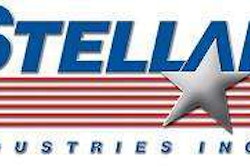
By Marcia Gruver Doyle
Hopes for an even adequate highway funding bill were dashed on the rocks of the U.S. House and Senate proposals released last month. How do we move roadbuilding revenues beyond the frozen-in-time gas tax?
One thing we can’t do is think our only choice to a gas tax increase is to do nothing, says Jack Schenendorf, co-author of a white paper released in July. It’s time to add fresh ideas to the highway funding question, an issue that’s been studied to death, says this former vice chairman of the National Surface Transportation Policy and Revenue Study Commission.
And so the white paper, sponsored in part by the Association of Equipment Manufacturers, proposes a different approach: The Highway Trust Fund would remain in place, generating revenues for federal-aid highways, excluding Interstates. Interstates, in turn, would be funded by two user fees, a Federal Interstate User Fee on all vehicles using Interstates, and a Federal Motor Carrier User Fee on commercial trucks.
But most important in these days of debt, the proposal doesn’t try to do today’s impossible task: raise the gas tax.
This proposal makes use of today’s electronics. Vehicles would carry an E-ZPass-type system, which would record when they enter and exit the Interstate and assess fees accordingly. Truck fees would be collected through the GPS systems already in widespread use.
Revenues generated would be deposited in a separate Highway Trust Fund account and used exclusively for Interstate work. The truck fee would go toward freight improvements such as intermodal facilities. As proposed, the level of fees, assessed each year by an independent commission, would be “pay as you build,” with states reimbursed from the fund for actual project costs.
“What’s different about this and previous proposals is there’s a strong link between the fees and the improvements they fund,” says Schenendorf. But most important in these days of debt, the proposal doesn’t try to do today’s impossible task: raise the gas tax.
Details still need to be addressed. For instance, how would it be enforced? (Perhaps as they do on toll roads, taking a picture of a license plate and issuing a ticket, muses Schenendorf.) There’s likely to be an outcry on the additional burden to the poor. And while the proposal specifically says fees would not be designed to control the level of traffic or “price out” drivers from the Interstate, Washington loves to listen to anti-growth crusaders.
Then there’s the matter of Congress not having access to the funds generated, and you know how much they’d love that.
Whatever happens with this proposal – released when the debt-ceiling debate was nearing its zenith and Congressional minds were on their next sound bite – “we hope to generate a conversation,” Schenendorf says, “because inaction on highway funding is not an option.”
Editor’s Note: To view the white paper in its entirety, go to www.aem.org/PDF/2011-07-27_SchenendorfModernizingSystem.pdf.













